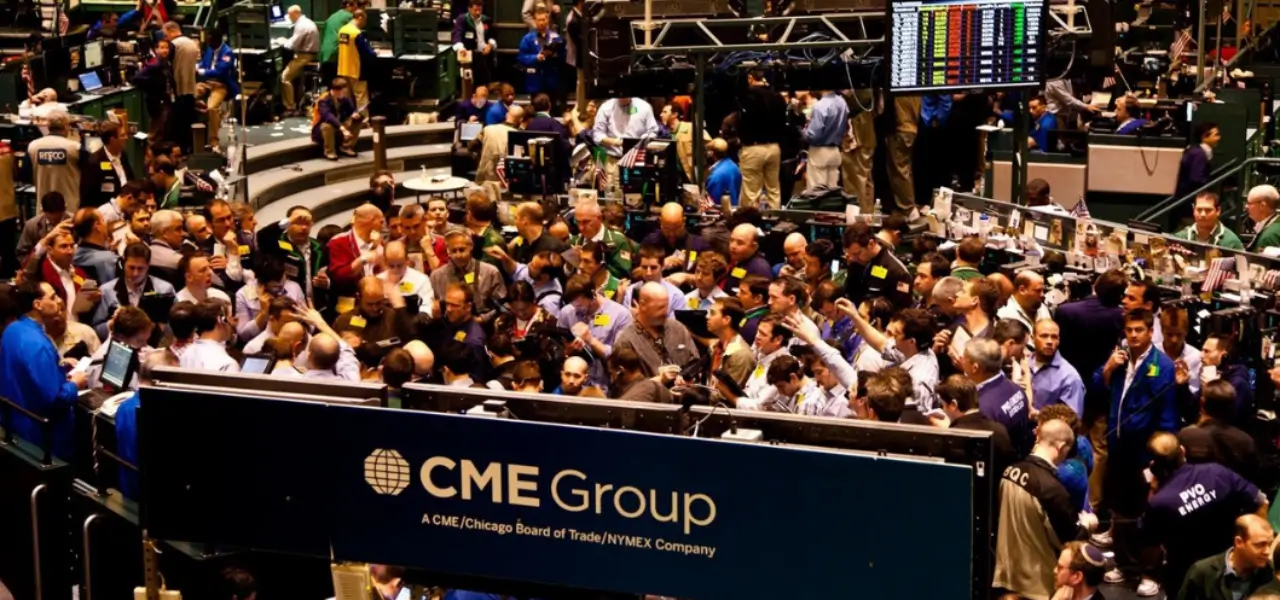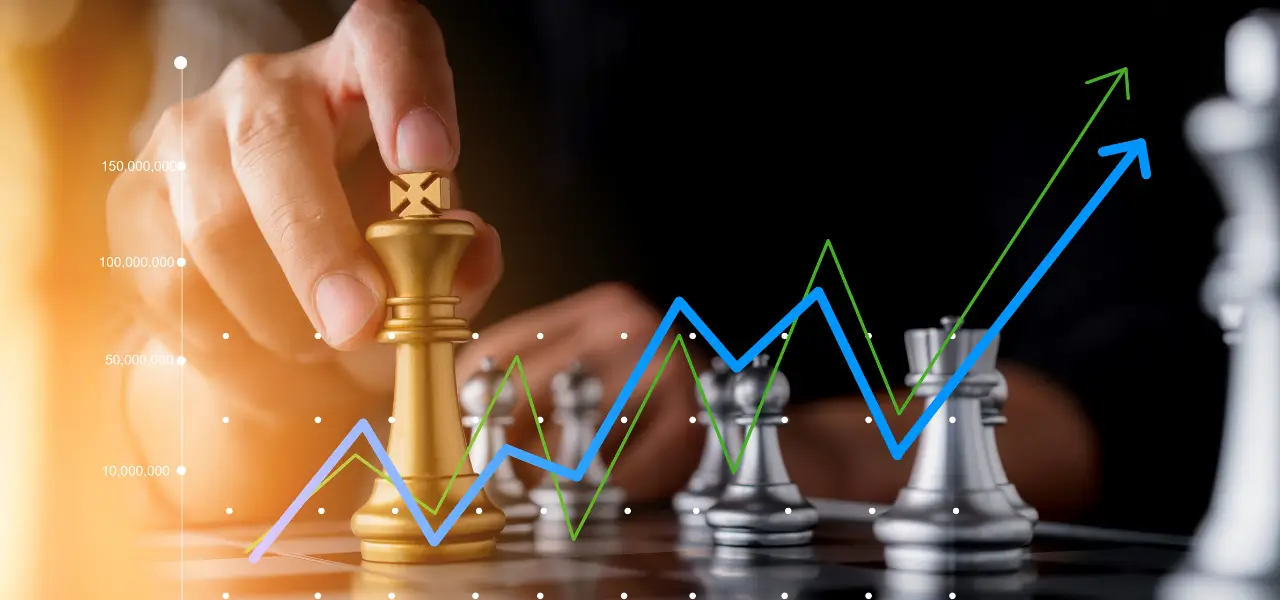Picture this: You have $1,000 in your trading account, but you want to control a futures position worth $50,000. Sound impossible? Welcome to the world of leverage in futures trading, where smart traders turn small capital into substantial market exposure every single day.
Leverage trading has transformed how modern traders approach the futures markets, offering unprecedented opportunities to amplify profits while managing capital efficiently. Whether you’re a complete beginner or looking to refine your futures trading leverage strategy, this comprehensive guide will take you from zero knowledge to expert-level understanding of leverage mechanics and risk management.
🚀 TL;DR: What is Leverage in Futures Trading?
Leverage in futures trading allows you to control large contract positions using only a small margin deposit as collateral.
How It Works:
- Deposit 3-12% of contract value as margin
- Control $50,000 contract with $2,500 margin = 20:1 leverage
- Margin = performance bond, not a loan
Key Impact:
- ✅ Amplifies profits: 1% favorable move = 20% return (20:1 leverage)
- ⚠️ Amplifies losses: 5% adverse move = 100% loss of margin
- 📊 Capital efficiency: Trade multiple markets with limited funds
Example: With $5,000 and 10:1 leverage, you control $50,000 worth of futures contracts instead of just $5,000.
What is Leverage in Futures Trading? 📈
Leverage in futures trading is the ability to control a large contract value with a relatively small amount of your own money. Think of it like using a crowbar to move a heavy object – a small force applied to the lever creates much greater force at the other end.
In futures markets, leverage allows you to trade futures contracts worth tens of thousands of dollars while only putting down a fraction of that amount as margin. For example, with 10:1 leverage, your $5,000 can control a $50,000 position, dramatically increasing your market exposure and profit potential. If you’re new to futures markets entirely, our comprehensive futures trading guide provides the foundation you need to understand how leverage fits into the broader trading ecosystem.
How Leverage Works in Futures Markets ⚙️
The Mechanics Behind Leverage
Futures leverage operates through a margin system where you deposit a performance bond (initial margin) to control a much larger notional value. When you buy a futures contract, you’re not paying the full contract price upfront – instead, you’re putting down a margin requirement that acts as collateral.
The leverage ratio determines how much position size you can control relative to your margin deposit. Modern futures platforms automatically calculate your leverage exposure, making it easier to understand your capital efficiency and risk exposure in real-time. For traders considering different markets, our detailed comparison of futures vs forex leverage explains why many professionals prefer futures markets for their leverage opportunities.
Leverage vs Margin: Understanding the Key Difference
While often used interchangeably, margin and leverage serve different purposes in futures trading. Margin is the actual money you deposit as collateral, while leverage refers to the multiplier effect that margin creates on your trading positions.
Margin requirements are set by exchanges based on market volatility and contract specifications, but leverage ratios can vary depending on your trading strategy and risk tolerance. Understanding this distinction helps you make informed decisions about position sizing and capital allocation.
Calculating Your Leverage Ratio
The leverage calculation is straightforward: divide the total position value by your margin requirement. If you control a $100,000 futures contract with $5,000 margin, your leverage ratio is 20:1.
| Contract Value | Margin Required | Leverage Ratio |
|---|---|---|
| $50,000 | $2,500 | 20:1 |
| $100,000 | $5,000 | 20:1 |
| $25,000 | $2,500 | 10:1 |
Higher leverage ratios mean greater capital efficiency but also increased risk exposure. Most successful traders adjust their leverage levels based on market conditions and their risk management strategy.
Types of Margin in Futures Trading 📊
Initial Margin Requirements
Initial margin represents the minimum capital requirement to open a futures position. Exchanges set these requirements based on historical volatility, contract size, and market risk factors. Initial margin typically ranges from 3% to 12% of the contract’s notional value.
Different futures instruments have varying initial margin requirements. Energy futures might require higher margins due to price volatility, while index futures may have lower requirements due to market stability and liquidity.
Maintenance Margin
Maintenance margin is the minimum account equity you must maintain to keep your leveraged positions open. When your account balance falls below the maintenance margin threshold, you’ll receive a margin call requiring additional funds or position reduction.
Maintenance margin is typically 75-80% of the initial margin requirement. This buffer helps prevent forced liquidation during minor market fluctuations while ensuring adequate collateral for your leveraged trades.
Day Trading Margins
Day trading margins offer significantly reduced capital requirements for intraday positions. Professional traders can access day trading leverage with margins as low as $50 for popular futures contracts, provided positions are closed before the trading session ends.
Day trading margins revert to overnight maintenance margins if positions remain open past the session close. This system allows active traders to maximize capital efficiency during trading hours while maintaining appropriate risk controls for overnight exposure.
Benefits of Using Leverage in Futures Trading ✅
Capital Efficiency and Increased Market Exposure
Leverage trading dramatically improves your capital efficiency by allowing you to diversify across multiple futures markets with limited funds. Instead of tying up $100,000 to trade one contract, you can use $5,000 margin and deploy the remaining $95,000 across different trading opportunities.
This enhanced market exposure enables portfolio diversification across commodity futures, index futures, currency futures, and interest rate futures simultaneously. Smart capital allocation through leverage can reduce overall portfolio risk while maintaining profit potential.
Enhanced Profit Potential
Leverage amplification transforms small price movements into significant profit opportunities. A 1% favorable move in an unleveraged position generates 1% return, but the same market movement with 20:1 leverage produces a 20% return on your margin investment.
Successful traders use leverage to compound trading gains more rapidly than traditional buy-and-hold strategies. However, this profit amplification requires disciplined risk management and proper position sizing to avoid catastrophic losses.
Portfolio Diversification Opportunities
Futures leverage enables sophisticated portfolio strategies that would be impossible with limited capital. You can simultaneously trade agricultural futures, precious metals, energy markets, and stock indices with a fraction of the capital required for physical ownership.
Advanced traders use leverage for hedging strategies, spread trading, and arbitrage opportunities across different futures markets. This strategic diversification can reduce overall portfolio volatility while maintaining attractive return potential.
Risks and Challenges of Leverage Trading ⚡
Amplified Losses and Drawdown Risk
Leverage cuts both ways – while it amplifies profits, it equally magnifies losses. A 5% adverse move against a 20:1 leveraged position results in a 100% loss of your margin, potentially wiping out your entire trading account.
Drawdown management becomes critical with high leverage trading. Consecutive losing trades can quickly deplete account equity, leading to reduced position sizes or complete trading incapacity. Professional traders always plan for worst-case scenarios and maintain adequate capital reserves.
Margin Calls and Liquidation Scenarios
Margin calls occur when unrealized losses push your account equity below the maintenance margin threshold. Failure to meet margin calls results in forced liquidation of positions at potentially unfavorable prices, crystallizing paper losses into actual losses.
Liquidation scenarios can happen rapidly during volatile market conditions, leaving traders with insufficient time to add additional margin or adjust positions. Understanding liquidation triggers and maintaining adequate account buffers prevents unwanted position closures.
Psychological Trading Pressure
High leverage trading creates intense psychological pressure that can lead to poor decision-making. Fear of large losses may cause premature trade exits, while greed from quick profits might encourage excessive risk-taking and position oversizing.
Emotional trading decisions become more costly with leverage amplification. Successful leverage traders develop mental discipline, stick to trading plans, and never risk more than they can afford to lose, regardless of leverage availability.
Leverage Trading with Prop Firms: The Phidias Advantage 🎯
What is Prop Firm Leverage Trading?
Prop firm leverage trading revolutionizes how traders access high-leverage opportunities without risking personal capital. Proprietary trading firms like Phidias provide funded accounts with substantial leverage, allowing skilled traders to profit from market movements while the firm bears the financial risk.
Prop firms evaluate trading skills through challenge accounts before providing live funding. This model gives talented traders access to professional-level leverage and capital resources that would be impossible to obtain through personal trading accounts. To understand how this revolutionary approach works, explore our detailed guide on what prop firms are and why they’re transforming modern trading.
Low Personal Risk, High Profit Potential
The prop firm model transforms the risk-reward equation of leverage trading. Instead of risking your own money with high leverage, you risk only a small evaluation fee for the opportunity to trade funded accounts worth $50,000 to $100,000 or more.
At Phidias, we provide multiple account types with varying leverage levels and risk parameters. Successful traders can earn consistent payouts from leveraged profits while maintaining limited personal financial exposure to market volatility. Learn more about how prop firms work to maximize your leverage trading potential.
How Phidias Maximizes Your Leverage Benefits
We offer flexible account structures designed to optimize leverage efficiency for different trading styles. Swing traders can hold leveraged positions overnight and over weekends, while scalping strategies benefit from reduced day trading margins and instant execution.
Our platform provides real-time risk monitoring, automated margin calculations, and professional trading tools that help maximize leverage effectiveness. We support up to 15 funded accounts simultaneously, allowing experienced traders to scale their leverage strategies across multiple positions. Visit our accounts page to explore different leverage options and find the perfect match for your trading style.
From Evaluation to Funded Trading
Our evaluation process tests your leverage management skills under realistic trading conditions. Passing traders receive CASH accounts with immediate access to leverage trading and regular payout opportunities based on trading performance.
We provide comprehensive educational resources, 24/7 support, and community access to help traders master leverage techniques and develop profitable strategies. Successful traders can progress to LIVE accounts with enhanced leverage and unlimited profit potential. For complete details on trading requirements and leverage rules, review our comprehensive trading rules.
Risk Management with Leverage 🛡️
Position Sizing Rules
Proper position sizing forms the foundation of successful leverage trading. Never risk more than 1-2% of your total account equity on any single leveraged trade, regardless of how confident you feel about the market direction.
Calculate position sizes based on your stop loss distance and maximum acceptable loss rather than available leverage. This approach ensures consistent risk management across all trading opportunities and prevents account-destroying losses from single bad trades.
Stop Loss Implementation
Stop losses become absolutely critical with leverage trading due to amplified loss potential. Set stop losses before entering any leveraged position and never move them against your position once trades are active.
Use technical levels, volatility-based stops, or percentage-based rules to determine appropriate stop loss placement. Advanced traders often use trailing stops to lock in profits while allowing winning leveraged positions to continue running.
Diversification Strategies
Never concentrate all your leverage in a single market or trading strategy. Spread risk across different futures instruments, time frames, and trading approaches to reduce overall portfolio volatility and drawdown risk.
We recommend trading no more than 25% of your available leverage in any single position or related group of positions. This diversification protects against sector-specific risks and unexpected market events that could impact concentrated positions.
Common Leverage Mistakes to Avoid ⚠️
Over-leveraging Pitfalls
Over-leveraging represents the most common mistake among new futures traders. Using maximum available leverage might seem attractive for quick profits, but it virtually guarantees account destruction during inevitable losing streaks.
Start with conservative leverage ratios (5:1 or less) until you develop consistent profitability and proven risk management. Gradually increase leverage only after demonstrating sustained success with lower risk levels.
Ignoring Market Volatility
Market volatility directly impacts leverage effectiveness and risk levels. High volatility periods require reduced position sizes and tighter risk controls, while low volatility markets may allow slightly higher leverage usage.
Monitor volatility indicators like VIX for equity futures or implied volatility for specific contracts before adjusting leverage levels. Adapt your strategy to current market conditions rather than using static leverage across all market environments.
Poor Risk Management
Inadequate risk management with leverage leads to predictable failure. Avoid risking large percentages of your account on single trades, trading without stops, or adding to losing positions to average down.
Develop systematic approaches for position entry, exit criteria, and risk controls before using significant leverage. Successful leverage trading requires discipline and consistency more than market timing or complex strategies. For comprehensive guidance on developing these skills, our prop firm challenge guide provides practical strategies for managing leverage effectively during evaluation periods.
How to Leverage the Prop Firm Opportunity
Maximizing Your Success with Funded Accounts
Prop firm success requires adapting your strategy to funded account rules and leverage parameters. Focus on consistency rather than home-run trades, as prop firms value steady performance over volatile results.
We reward traders who demonstrate skill through consistent profitability and proper risk management. Leverage our platform capabilities and educational resources to refine your approach and maximize long-term success with funded trading.
Building Long-term Wealth Through Leverage
Professional prop trading offers a sustainable path to financial independence through skilled leverage usage. Successful traders can scale from small evaluations to multiple funded accounts and eventual live trading with substantial capital.
We support your growth journey from initial evaluation through advanced trading strategies. Our platform grows with you, providing increased leverage opportunities and enhanced profit sharing as you demonstrate consistent success.
Accessing Professional Trading Resources
Leverage our professional infrastructure including institutional-grade platforms, real-time data feeds, and advanced order types that enhance trading efficiency. We provide everything professional traders need to maximize leverage effectiveness.
Join our community of funded traders who share strategies, discuss market conditions, and support each other’s success. Continuous learning and strategy refinement are essential for long-term leverage trading success. For additional educational resources and advanced techniques, explore our extensive collection of trading books covering risk management, leverage strategies, and professional trading methods.
Frequently Asked Questions About Futures Leverage ❓
Q: What is the maximum leverage available in futures trading?
A: Futures leverage can range from 10:1 to over 100:1 depending on the contract and broker. We offer competitive leverage ratios tailored to different account types and trading experience levels.
Q: How much money do I need to start leverage trading?
A: You can start leverage trading with minimal capital through our evaluation programs. Initial costs range from $25 to $164 depending on account size, providing access to substantial leverage with limited personal risk.
Q: Can I lose more money than I deposit with leverage?
A: In traditional trading, yes – leverage losses can exceed initial deposits. However, our funded accounts limit your personal risk to the evaluation fee, while providing access to professional leverage with firm capital.
Q: How do I calculate my leverage ratio?
A: Leverage ratio = Total Position Value ÷ Margin Required. Our platform automatically calculates current leverage and available margin for all open positions and potential trades.
Q: What’s the difference between leverage and margin?
A: Margin is the actual money deposited as collateral, while leverage is the multiplier effect that margin creates. Higher margin requirements result in lower leverage ratios for the same position size.
Q: How do I manage risk with high leverage?
A: Use proper position sizing (1-2% risk per trade), set stop losses before entering positions, diversify across markets, and never use maximum available leverage. We provide comprehensive risk management tools and education to support safe leverage usage.
Q: Can beginners use leverage in futures trading?
A: Beginners should start with lower leverage ratios and focus on education before increasing risk levels. Our evaluation process helps new traders learn proper leverage techniques in a controlled environment with limited personal risk.
—
Ready to harness the power of leverage in futures trading? Join thousands of successful traders who have leveraged their skills into consistent profits with Phidias Propfirm. Start your journey today with our comprehensive evaluation programs and discover how professional leverage can transform your trading results.












